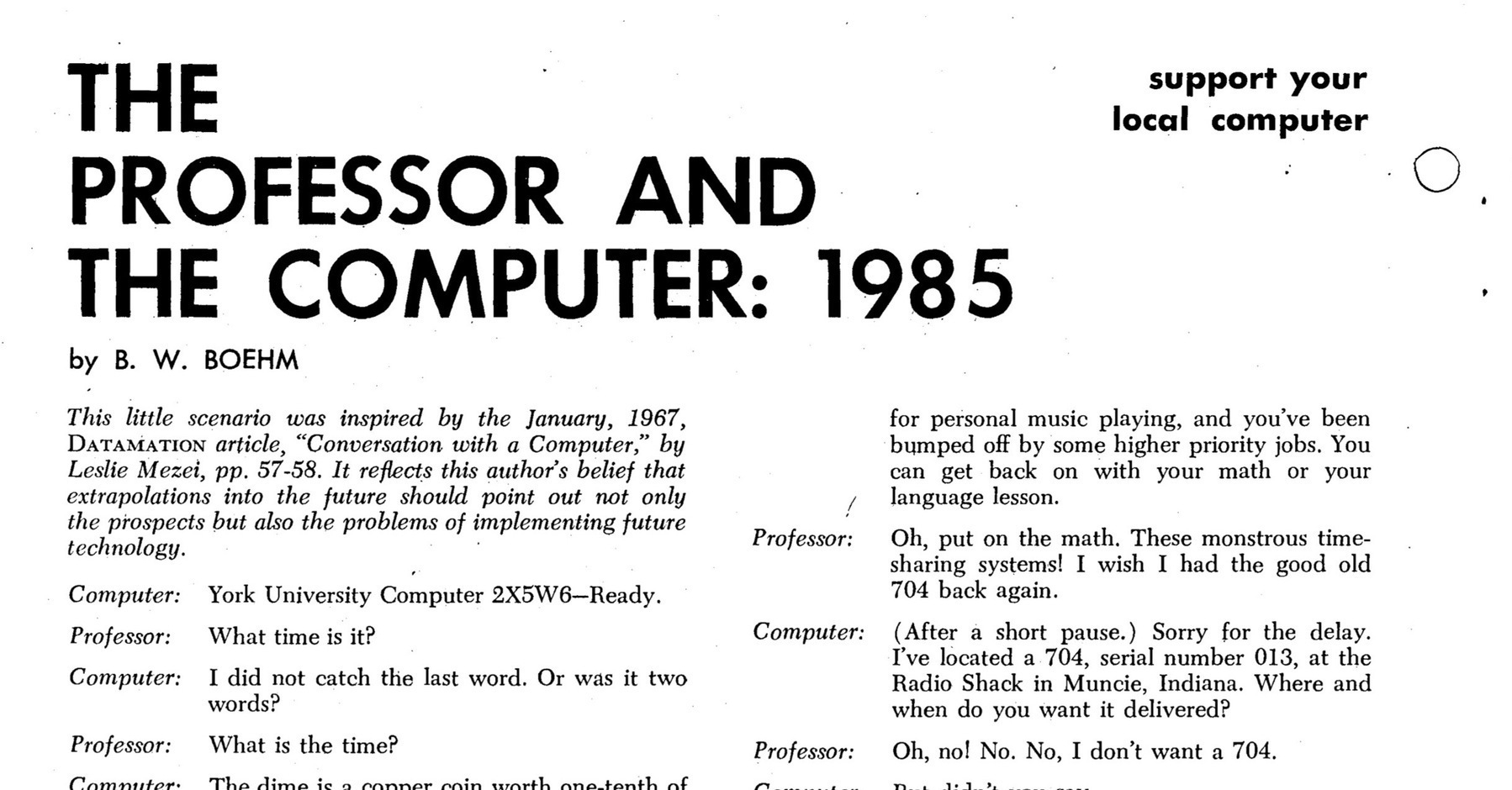AI slop
John Oliver on Last Week Tonight regarding AI slop.
“AI slop is basically the newest iteration of spam.” (3:26)
“It’s not just that we can get fooled by fake stuff, it’s that the very existence of it then empowers bad actors to dismiss real videos and images as fake. It’s an idea called the liar’s dividend.” (24:33)
“AI slop can be…worryingly corrosive to the general concept of objective reality.” (25:46)
Siri in 1967?
“The Professor and the Computer: 1985,” from Datamation magazine, August 1967 (pp. 56, 58).
This back-and-forth reminds me of the current state of Apple’s Siri, here in 2005…sorry, 2025.
Professor: Oh, put on the math. These monstrous time-sharing systems! I wish I had the good old 704 back again.
Computer: (After a short pause.) Sorry for the delay. I've located a 704, serial number 013, at the Radio Shack in Muncie, Indiana. Where and when do you want it delivered?
Professor: Oh, no! No. No, I don't want a 704.
Computer: But didn't you say ...
Professor: Never mind what I just said. I ...
Computer: Okay, I'll disregard your statement just previous. Now, where do you want your 704 delivered?
The notion that the computer would place an order for another computer, an IBM 704, also reminds me of Amazon’s AI-powered Alexa+ and its connection to consumers and online shopping.
The slow roll-outs of Alexa+ and Apple’s “new” Siri and Apple Intelligence are related to the complexity of LLMs and AI, especially in wide release to the general public. Tech companies are realizing that the “last mile is a lot farther away than they anticipated." It’s one thing to have an extra pack of kitchen sponges delivered, and another for a mainframe computer to show up on the doorstep.
(Full text of the article below, Datamation magazine, August 1967 (pp. 56, 58). PDF link to the article pages, and the full issue is available at Bitsavers.org)
We're in TDF: Unchained!
We’re in TDF: Unchained! We finished watching Tour de France: Unchained on Netflix, and we’re in the last episode in Nice! We’re blurry figures on the side of the road during the time trial, but still there ☺️ (S3: E8).
I took this video of Tadej Pogačar at the time trial. The video was taken with a DJI Osmo Pocket 3 in slow motion, but slow motion video doesn’t include audio. So I used my iPhone to record ambient sound, and then synced the video and audio together with Final Cut Pro on Mac.

Tour de France: Unchained - Season 3 on Netflix
So excited to watch Tour de France: Unchained, Season 3, especially after visiting the Tour during its filming.
I’m sure it’ll be a different perspective, enlightening our trip to week 3 of the Tour last year in July, 2024.
Murderbot and his "Hippie Clients"
I’m enjoying the Apple TV series, “Murderbot."
The mix of “green world” (organic and open), and “closed world” (artificial and enclosed) are quite prevalent, even in the mind of Murderbot himself: [1]
“I could just leave them to cope on their own, I guess. But it wasn’t that easy. It’s wrong to think of constructs like me as half-bot, half-organic. Like the bot-half should just want to obey orders and do its job. And the organic part should want to protect itself and get the hell out of there. As opposed to the reality. Which was that I was one, whole confused entity.” (S1: E7 at 13:22, Murderbot internal dialogue)
And in the next episode:
“I was trying to calm myself down with some of my favorite episodes. But I couldn’t focus. It was like this new show, “Murderbot: And Its Selfish Ungrateful Hippie Clients,” had just taken over." (S1: E8 at 22:39, Murderbot internal dialogue)
I’d share some screenshots of the show, but sadly, screenshots are disabled on Apple devices. There are some workarounds though, and here’s the trailer:
Note that the trailer is from YouTube. It would be nice if Apple TV shows and movies could be embedded from Apple TV, without all the ads and other nonsense.
[1]: The “green world” and “closed world” ideas are from a book by Paul Edwards, The Closed World: Computers and the Politics of Discourse in Cold War America (Cambridge, MA: MIT Press, 1996).
Honeywell Rabbit Sculpture
Honeywell Rabbit Sculpture (ca. 1965) at the Computer History Museum.
The Rabbit sculpture features on pages 48-49, in Core magazine (2015), published by the Computer History Museum.
The sculpture, made of resistors, was created around 1965, and part of an advertising campaign featured in Business Week magazine.
Univac ad - Fortune magazine, September 1956
“Univac - For Finding Lost Moons of Lost Dollars”
Early computers, from the scientific world to the business world.
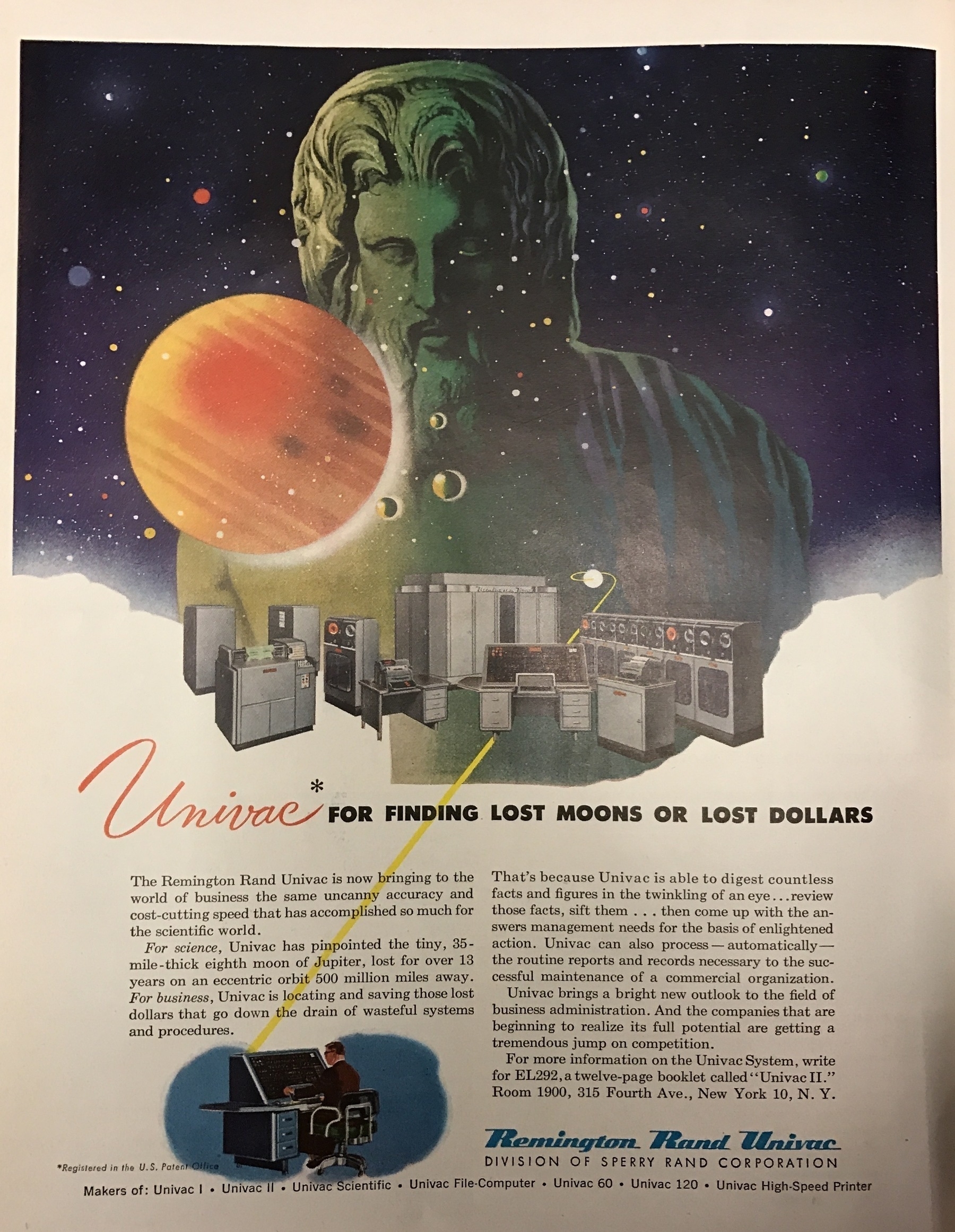
Video - Tour de France 2024
Video from our trip to the 2024 Tour de France, it’s 15min but quite entertaining!
We toured with Custom Getaways and had a wonderful time. They’re an official tour operator of the Tour de France, making us part of the tour with special access and events, amazing!
The video was taken with an iPhone 15 Pro and a DJI Osmo Pocket 3.
Photos - Tour de France 2024
Photos from our trip to the 2024 Tour de France, week three in Nice.
We toured with Custom Getaways and they were absolutely amazing 👌
Hyper-Reality
Hyper-Reality on Vimeo was posted 9 years ago, but it feels like the not-so-distant future, like in the next 5 minutes.
iPad traffic lights Easter egg
Is it just me, or was there a pre-roll before Craig’s F1 driving showing an Easter egg of the iPad Window Controls? I think there was a quick image of the traffic light buttons on an iPad window floating by in the montage, but it’s not on the published video as far as I can tell.
6 out of 5 stars - Apple WWDC 2025
One of the best parts of the WWDC 2025 Keynote, “6 out of 5 ⭐️” by Allen Stone.
Visualizing History
Histography is a data visualization project by Martin Stauber, and it’s pretty amazing.
“Histography" is interactive timeline that spans across 14 billion years of history, from the Big Bang to 2015. The site draws historical events from Wikipedia and self-updates daily with new recorded events. The interface allows for users to view between decades to millions of years. The viewer can choose to watch a variety of events which have happened in a particular period or to target a specific event in time. For example you can look at the past century within the categories of war and inventions.
The project reminds me of The Fifth Element when Leeloo is researching “War." It’s not the interface, but the way so much information can be visualized in such a compact form – it can be a bit overwhelming.
(Revised and republished April 12th, 2025)
Deep LA Conference at The Huntington
I’ll be presenting a paper at the “Deep L.A.” graduate history conference taking place at The Huntington on October 3rd.
The conference is sponsored by UCLA and USC, with a focus on Los Angeles and Southern California regional history: http://lahistoryconference.tumblr.com
I’m presenting a portion of a chapter in my dissertation, which focuses on mainframes, paperwork, and the electrical utility company Southern California Edison during the postwar era.
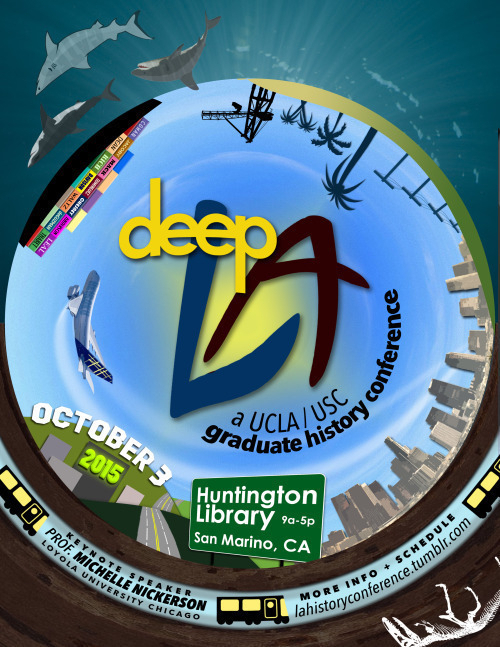
(Revised and republished March 28th, 2025)
The Census Has Always Been "Big Data"
The Census has always been “Big Data,” with or without computers and the automation of information.
Census and Sensibility: A Little History of Big Data at IEEE (Wayback Machine link)
Consider just one use of today’s big data with a deep history and a major impact on computational technology: keeping track of a country’s citizenry. This has often been accomplished through a periodic counting, or census. Many references to censuses exist in the ancient world, from Egyptian tomb inscriptions and the Hebrew Bible to, perhaps, most famously, the “worldwide” Roman census described in the Book of Luke in the New Testament.

The Virgin and Saint Joseph register for the census before Governor Quirinius. Byzantine mosaic at the Chora Church, Constantinople 1315–1320 – via Wikipedia
(Revised and republished March 28th, 2025)
Digital Imaginaries at AoIR
Something tells me I should have applied to the Association of Internet Researchers annual conference this year – the theme is “Digital Imaginaries.” The CFP has already passed, but the conference itself is coming up in late October, 21–24th, in Phoenix, Arizona. http://aoir.org/ir16/
The 16th annual Internet Research conference will provide an opportunity to question the ways that networked technologies are imagined and enter into collective imaginaries. In what ways do we culturally apprehend and make sense of digital media? These imaginaries influence our actual and potential uses of technology, as well as how we constrain, encourage, and dream about those uses.

(Revised and republished March 29th, 2025)
The New Video Arcades: Like A Working Museum, with Beer
Great article over at Polygon on new video game arcades: What it's Like Running an Arcade in 2015
It's a costly business, and it's no secret that many arcades have been looking for other ways to supplement that income, including combining arcades and bars together. "[Most people] have illusions that beer and arcades are a perfect gimmick," Wilson says. "If you don't love video games or know anything about repairing them or how to maintain them, you will lose your hat faster than the few minutes it takes to sign the lease on your new spot."
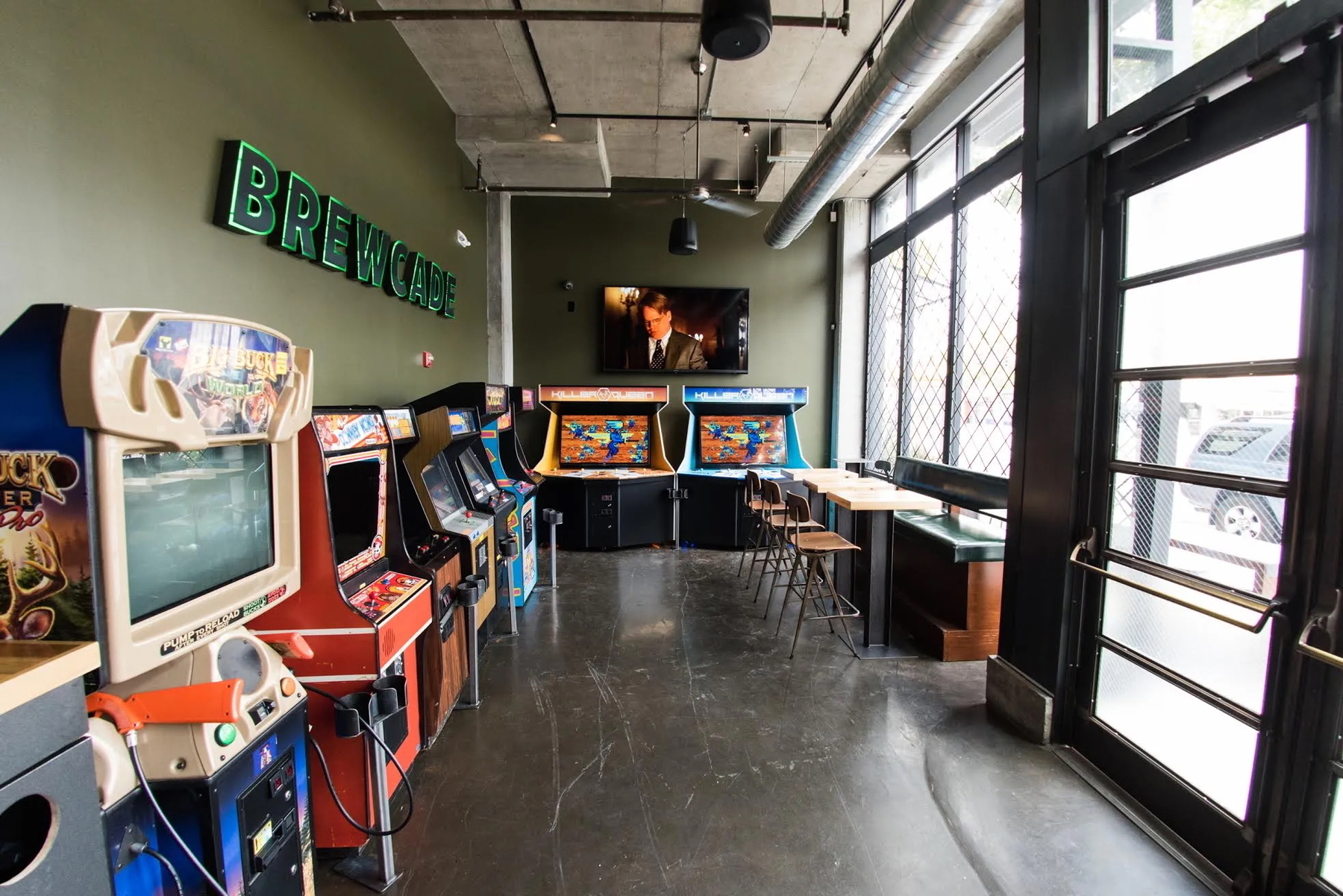
It’s great that they list figures for the businesses too. When you’re in one of these places it seems like the money is just pouring in, but that’s not the financial reality.
Plus, you’ll need to be really good at repairing these old machines, and in ways that retain their authenticity.
“It’s very important to have a very good video game repairman,” Horne says. “It’s very important. Probably the number one thing. And bring your patience when it comes to sourcing the games.”
Prices for the cabinets can wildly vary, on average costing around $1,000 a unit. For example, Mario Kart can run $2,500 to $3,000. Mike Tyson’s Punch-Out!! can run $1,500. Mortal Kombat 2 has doubled in price since Horne started buying machines.
(via kottke.org)
(Revised and republished April 12th, 2025)
People Working in Computer Room
As part of my dissertation I’m working with the Southern California Edison Photographs and Negatives collection at the Huntington Library. The photographic collection is now available online at the Huntington Digital Library. A few years ago, when I first came across this collection, it was only available in-person on a single computer.
I stitched the two photos below into an animated gif, showing the transition within computerized space. The images are from “People working in computer room with 1” tape drives" in the SCE collection at the Huntington. These before and after photos taken in 1966 at SCE appear to show how people would fit alongside and interact with the mainframe computer.
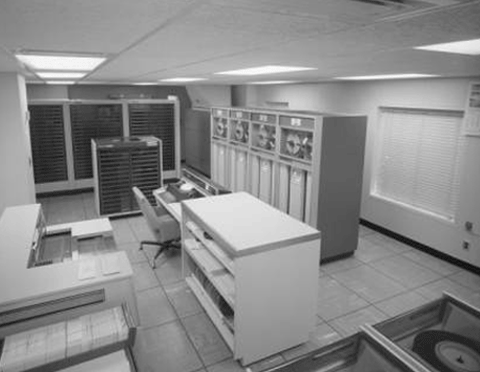
Photographs such as these often show many people in the room, mostly trying to look busy, with a few of them staring at equipment or pretending to use the machine. These staged photographs for internal use are similar to those used for marketing. In both cases the images are designed to show how people and computers would work together.
The mainframe in these photographs is a Control Data Corporation mainframe, and it appears to be a CDC 3200 system.
The Computer History Museum in Silicon Valley has a brochure for the CDC 3200 mainframe (PDF) available online as well.
(Revised and republished March 29th, 2025)
Univac 494 marketing photographs
I came across this Univac photograph online, showing three people working in a computer room. Using a reverse Google Image Search, it appears that this image and a few others like it were posted online around 2006. From there it looks like the pictures were blogged here and there, recently posted to Pinterest, then making their way to Instagram. I can’t seem to find the original image online, but this one looks like a scan of a partially damaged photo most likely used for marketing. It’s possible that this image could be printed in a brochure other other advertisement.
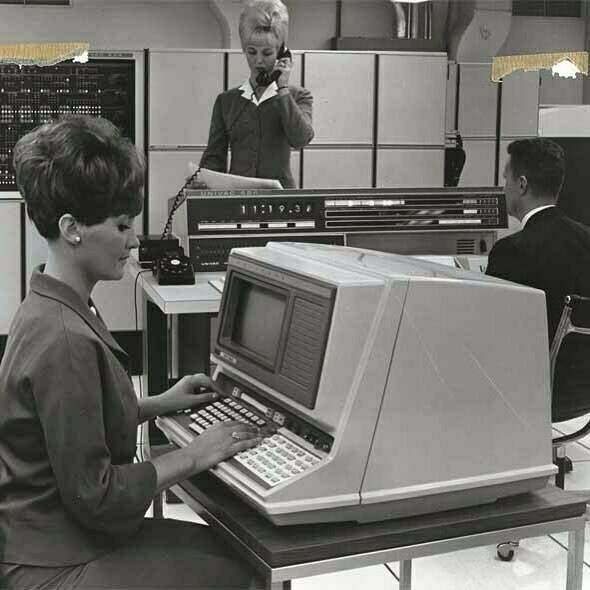
The image above is a little fuzzy, but the mainframe appears to be a Univac 494. This would date the photograph to 1965 or 1966 or so. The additional photographs below offer a closer view of the mainframe console and its peripherals. There’s also more information on the Univac 494 at Ed Thelen’s website (photos linked below).
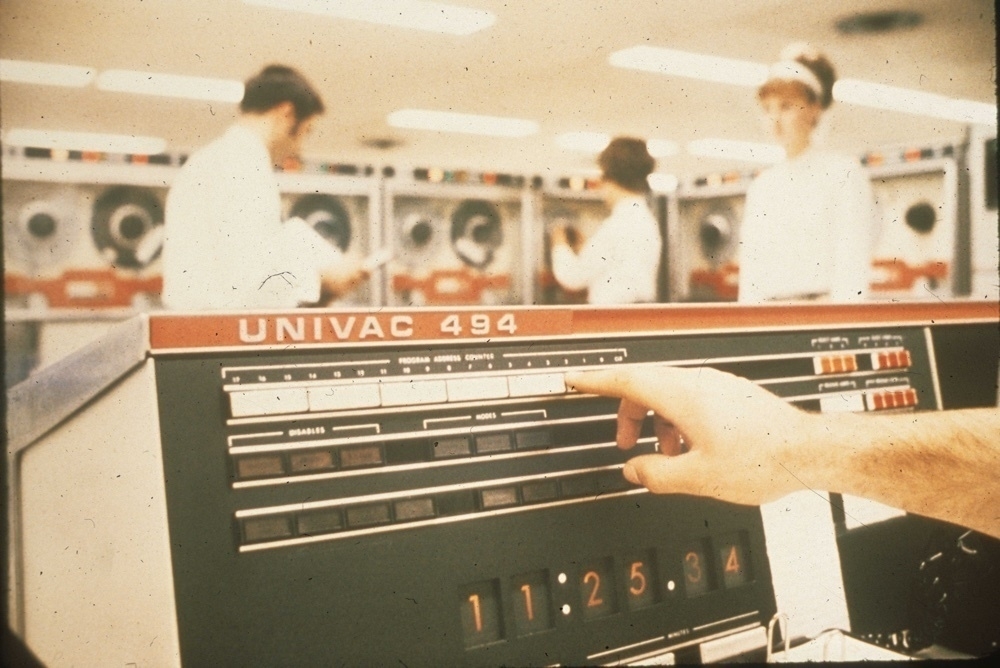
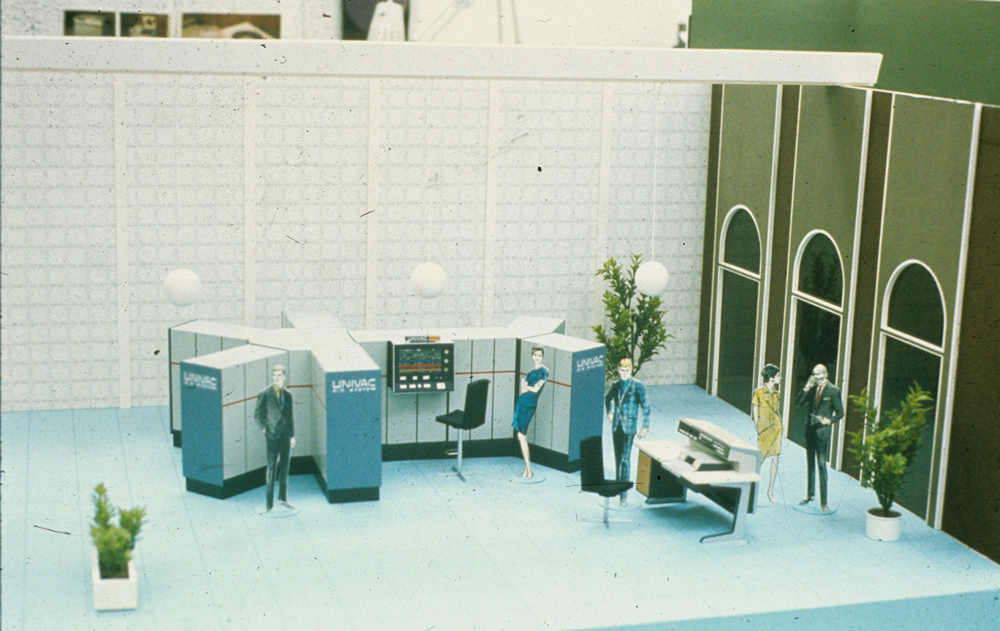
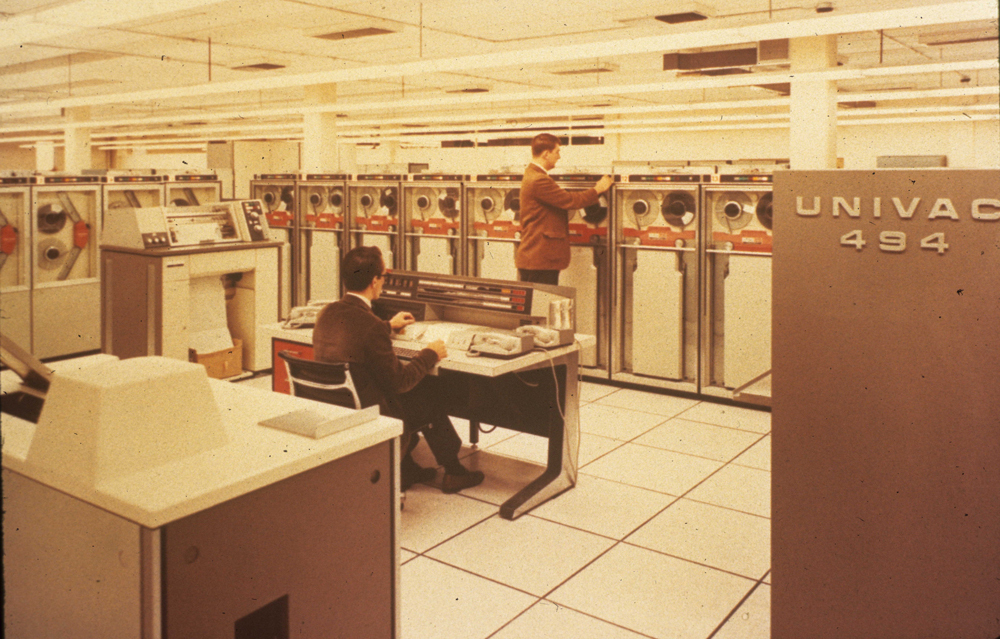
(Revised and republished March 30th, 2025)
I’ll See You Online: Teaching Assistants, Google Hangouts, and the Online Classroom
This paper was presented at the Cultural Studies Association annual conference in Riverside, CA in May of 2015.
When asked to be a teaching assistant for a fully online class at UC Riverside, my initial response was “of course…but what do I do?” The transition for teaching assistants into the digital world is an often overlooked aspect of online education, with little attention paid to issues of digital preparation, social media training, shifting labor demands, and digital pedagogy. In the physical classroom, teaching assistants play a vital role by grading papers, leading discussion sections, and most importantly, interacting with students. In the virtual classroom, however, TAs can easily become readers or aides that only grade papers and have little connection with students, or even the professor. In order to remedy this situation, in three online courses over the last two years in which I was a TA, the video conferencing service Google Hangouts was used for synchronous class discussions.
